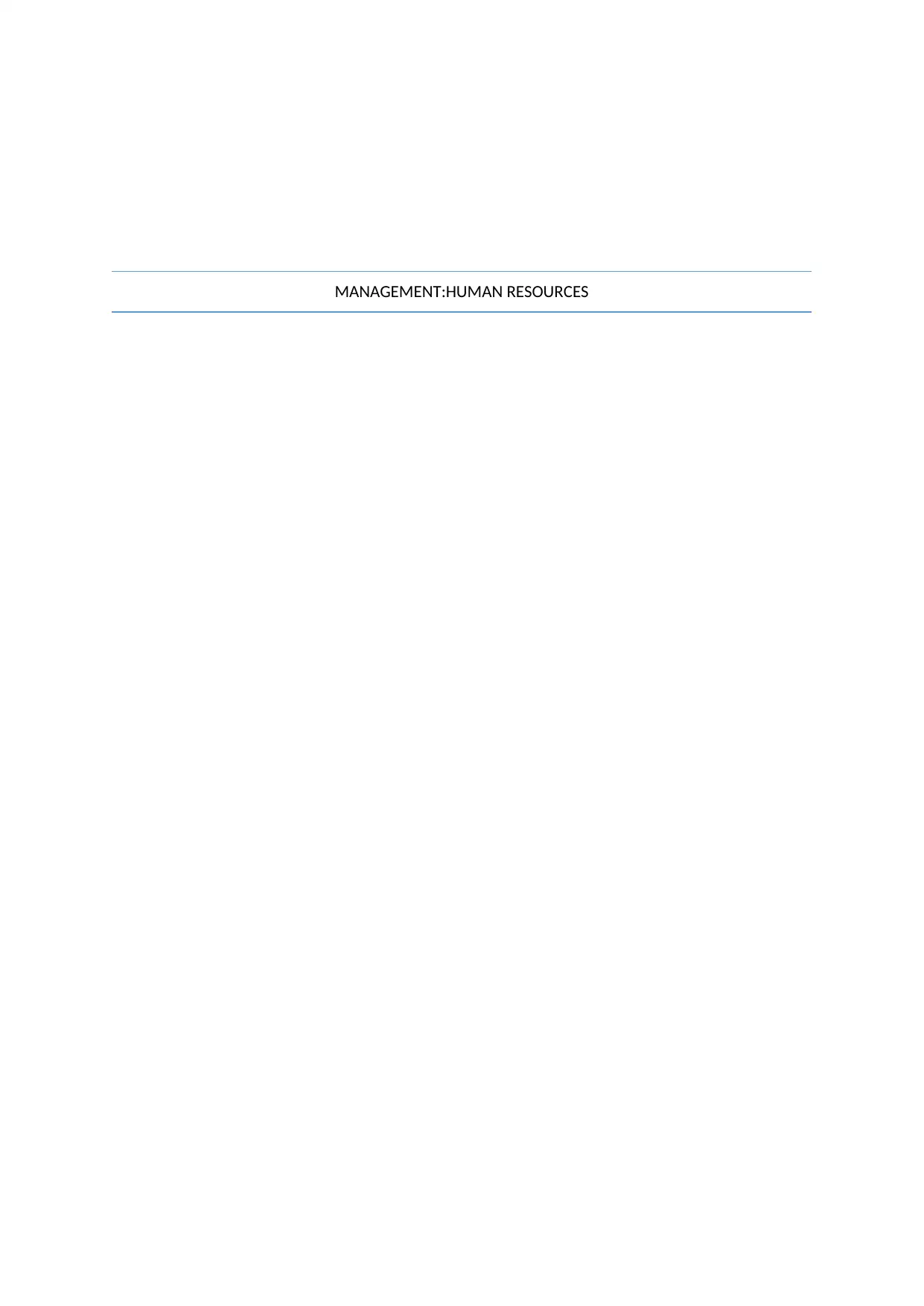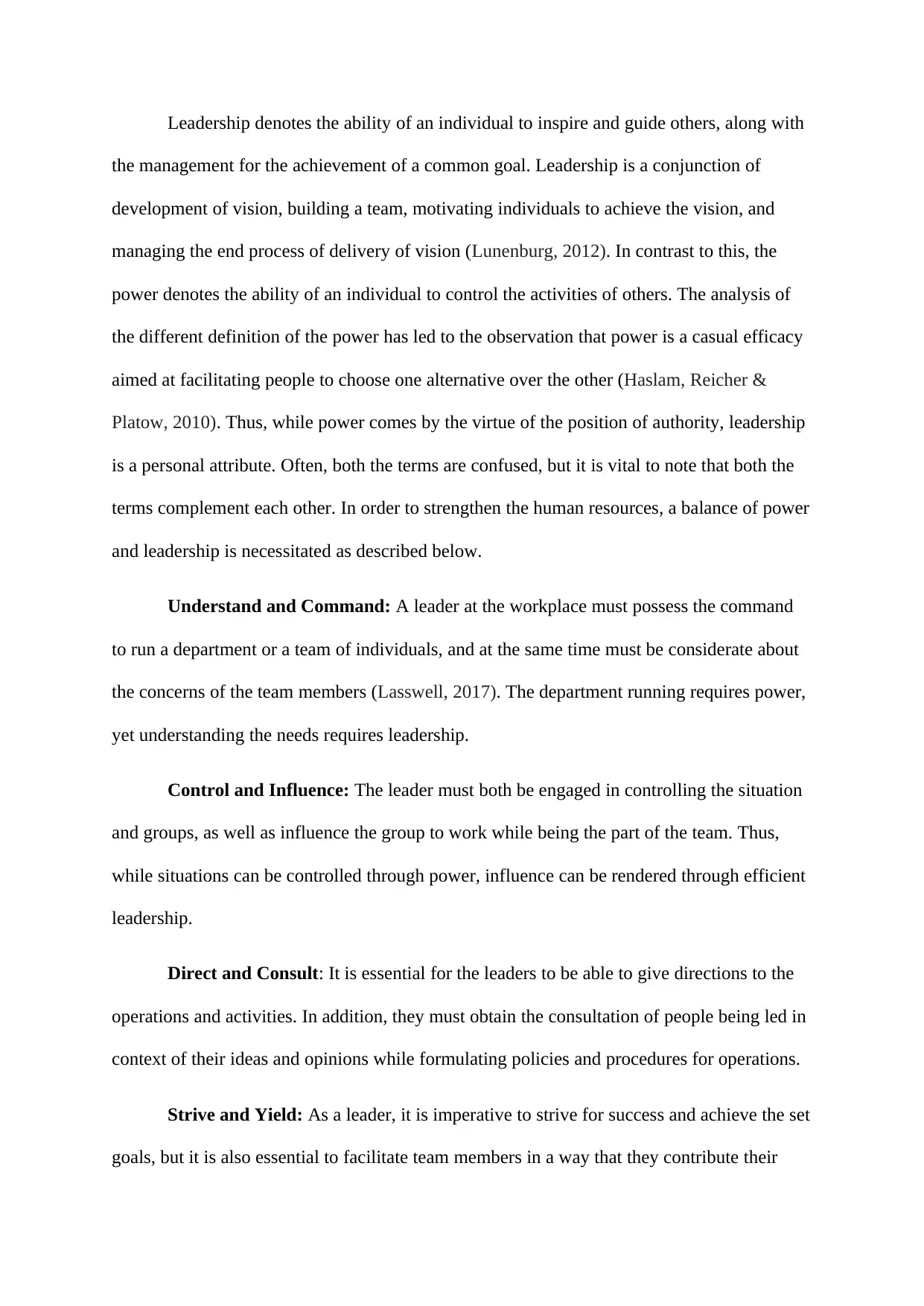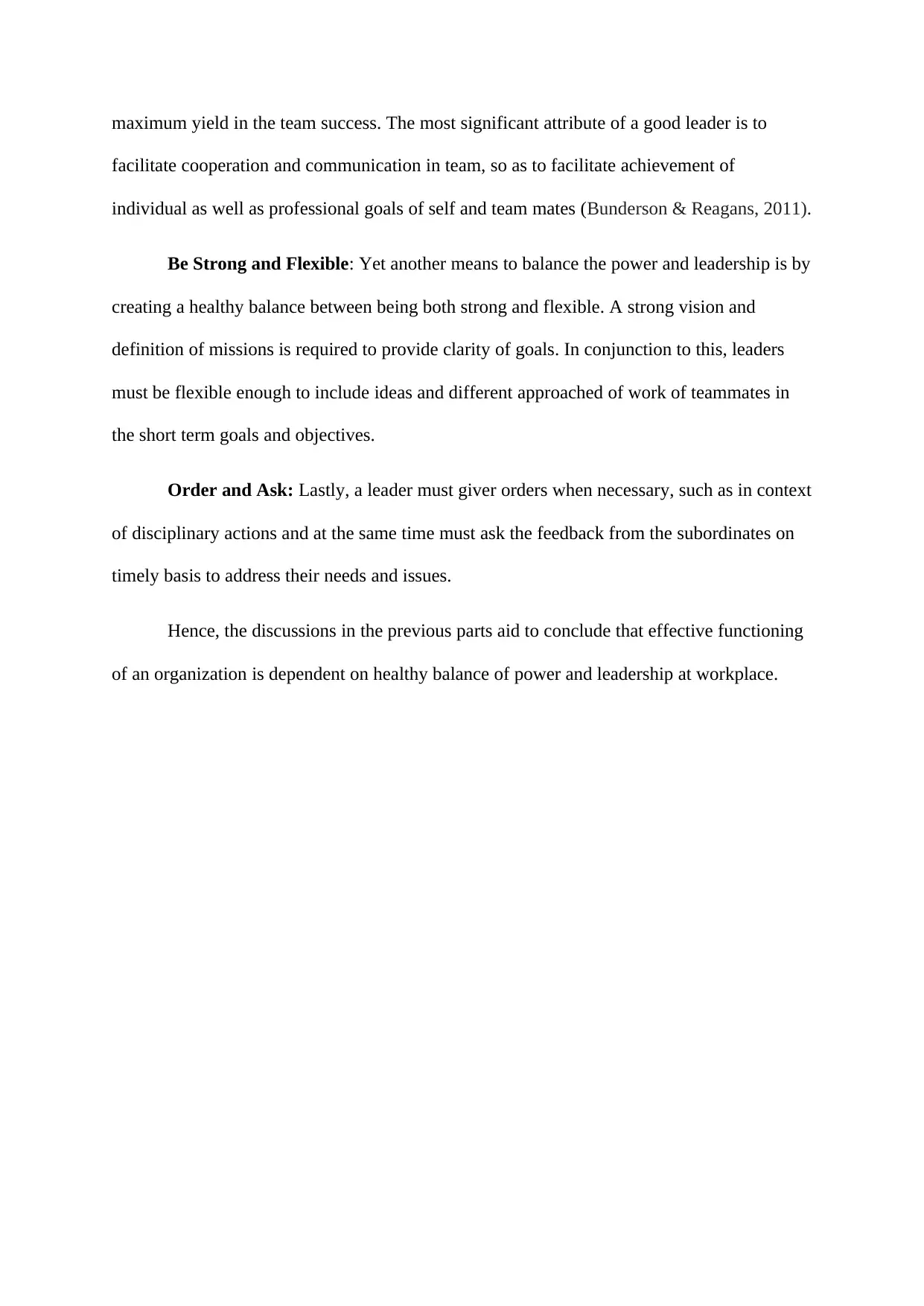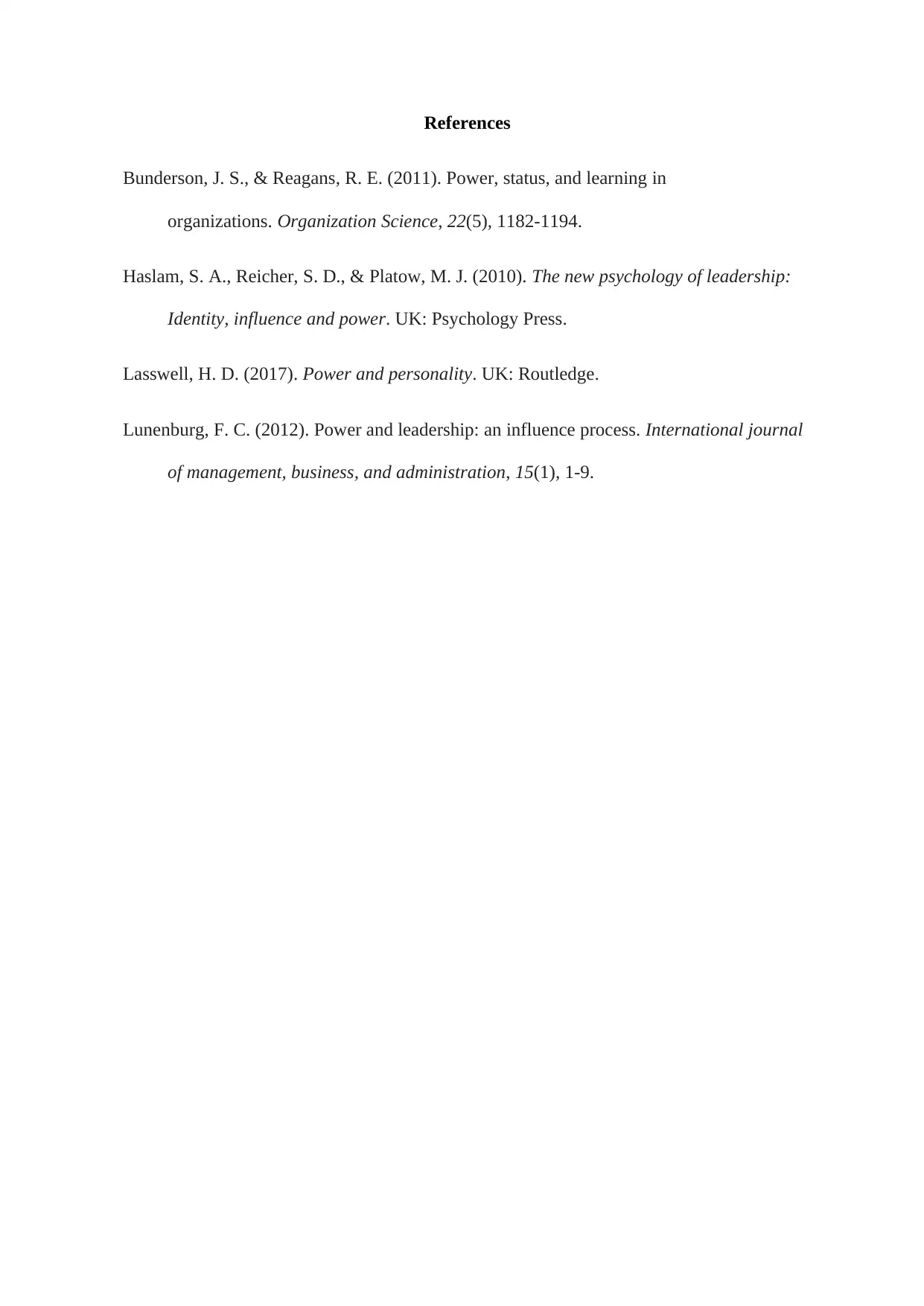A Comparative Analysis of Leadership and Power in Human Resources
VerifiedAdded on 2022/10/17
|4
|692
|8
Report
AI Summary
This report delves into the contrasting yet complementary concepts of leadership and power within the context of human resource management. It begins by differentiating between leadership, which involves inspiring and guiding others, and power, which pertains to the ability to control and influence. The report emphasizes the necessity of balancing these two elements for effective management, highlighting several key aspects. These include the need to understand and command, control and influence, direct and consult, strive and yield, be strong and flexible, and finally, to order and ask. Each aspect is discussed in detail, underscoring how a leader can integrate both power and leadership to foster a productive and cohesive work environment. The report concludes by asserting that the successful functioning of an organization relies heavily on the healthy balance of power and leadership within the workplace, supported by references to academic sources.
1 out of 4











![[object Object]](/_next/static/media/star-bottom.7253800d.svg)